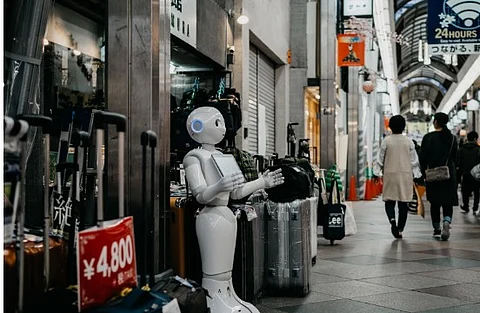

Robotics and artificial intelligence (AI) are transforming work. These technologies are no longer fiction but are becoming an integral part of our everyday work routines. While there are those who fear this tech revolution, fretting about job losses on a massive scale, others are of the opinion that there are never-before-seen opportunities for generating jobs and boosting economic growth.
This blog explores the interplay between work and automation, examining how robotics and AI are reshaping industries to create new types of work. The skills required to succeed in the workplace of tomorrow are changing and employees will be better equipped to deal with a challenging career in an automated economy.
AI includes a wide range of technologies that enable machines to perform tasks that are traditionally human-intensive. These include machine learning computer programs that can examine vast datasets, natural language processing software that can interpret and generate human language, and computer vision technology that can enable machines to recognize and interpret visual information.
When combined with AI, robots can execute more complex operations with greater precision and consistency than human laborers. The balance between human labor and machine intelligence varies from industry but numerous trends are unfolding:
Artificial intelligence is becoming power decision technologies, augmenting human judgement rather than replacing it.
Routine repetitive operations are increasingly being automated, freeing human laborers to focus on more complex, creative work.
The best performing companies are those which thoughtfully merge the strengths of humans and machines, leveraging each specific abilities.
One of the first sectors to embrace automation was manufacturing, and the pace is showing no signs of abating. Smart factories that incorporate sensors, IoT, and robot assembly lines are soon going to become the norm. These technologies ensure unparalleled precision, consistency and productivity.
Predictive maintenance based on AI is yet another significant development. By monitoring equipment sensor data, AI software can predict when equipment is most likely to break down, facilitating proactive maintenance that minimizes downtime and maximizes equipment lifespan.
The retail experience is being revolutionized by AI-powered chatbots and virtual assistants that can answer customer questions 24/7 without fatigue or frustration. Self-checkout counters are now ubiquitous in most stores, while automated inventory management systems in the background replenish products with ease.
The height of this trend is Amazon’s cashierless stores, which use computer vision and sensor functions to track what items customers grab from shelves, and then bill their accounts upon departure.
In medicine, AI is enhancing diagnostic accuracy with image recognition technologies that can detect patterns not visible to the human eye. Robotic surgery offers improved accuracy for delicate procedures, and administrative tasks like scheduling appointments and medical coding are increasingly automated. These technologies don’t substitute healthcare providers but augment them, allowing them to better focus on patient care and complex medical decision-making.
The transportation industry is on the cusp of revolutionary change through autonomous vehicles and self-guiding delivery pods. Major companies are investing billions of dollars into autonomous technology, ranging from driverless cars to robotaxis.
With increasingly more operations being automated, so too is there a larger need for professionals who can design, install, and maintain such systems. These include:
AI designers and data analysts who develop and refine algorithms.
Robotics service technicians who install and repair automated machinery.
Ethics specialists who ensure that AI systems operate within appropriate ethical boundaries.
All of these occupations earn good wages and have excellent opportunities for career growth, testament to their sheet necessity in today's economy.
Rather than replacing humans entirely, the majority of AI applications are designed to complement human workers. This human-AI collaboration generates new employment opportunities that integrates uniquely human abilities such as creativity, emotional intelligence, and ethical judgment with the computational capacity of AI.
Organizations are increasingly investing in reskilling and upskilling programs to allow workers to move into these new collaborative work models, recognizing that human capital remains their biggest asset.
AI enables new business models and creates opportunities for cutting-edge entrepreneurs. From intelligent education platforms to AI-based health monitoring systems and trading platforms that trade Bitcoin and other currency on your behalf, entrepreneurs are developing innovative solutions to meet human requirements using smart technology.
Though it is promising, the AI revolution also brings with it gigantic challenges. Job displacement is a very real threat, particularly for workers in jobs most susceptible to automation and least capable of adjusting to learn new skills.
The future of work will not be shaped by technology but by choices we make on how to incorporate these powerful tools into our society and economy. Through thoughtful design and a human-centered approach to technological innovation, we can construct a future of work that will deliver dignity and purpose.
Join our WhatsApp Channel to get the latest news, exclusives and videos on WhatsApp
_____________
Disclaimer: Analytics Insight does not provide financial advice or guidance on cryptocurrencies and stocks. Also note that the cryptocurrencies mentioned/listed on the website could potentially be scams, i.e. designed to induce you to invest financial resources that may be lost forever and not be recoverable once investments are made. This article is provided for informational purposes and does not constitute investment advice. You are responsible for conducting your own research (DYOR) before making any investments. Read more about the financial risks involved here.
